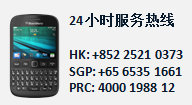India

Lifting of Iron Ore Mining and Export Restrictions
Members will be aware of the recent news in respect of possible resumption of significant iron ore shipments from India. The Association has in the past advised about the risks of liquefaction of iron ore, full details of which can be found here.
In respect of the latest developments, the Association can advise as follows:
1. The lifting of the mining restriction : Karnataka
The general ban against mining operations in Karnataka region by the Supreme Court of India (since July, 2011) has been partially lifted.
2. Export of Iron Ore from Goa
Export of iron ore from Goa had been banned, and there was an interim stay on mining activities. Towards the end of last year, the Supreme Court permitted the export of iron ore from Goa for cargo that was already mined and stockpiled. It is this development which has prompted the recent renewed interest in shipments of iron ore from India.
3.Status in other areas of India
The previous restrictions were focused on Karnataka and Goa. Other areas were not affected.
Main export ports for iron ore from India
4. East Coast of India: Haldia, Paradip, Vishakapatnam, Gangavaram.
West Coast of India: Port Reddy, Goa.
5.Present Weather and upcoming Season in India
At present the climate is relative dry and sunny across India, but the Southwest monsoons will commence around the first week of May.
6.Nature of cargoes available
The Association has been advised that cargoes originating from Goa may be coming from older stockpiles and these may have been stored for long periods in the open without cover. These stockpiles should be treated with caution as moisture may be locked away inside, and any drying may only affect surface layers.
Advice
The Association would repeat its cautions about the risks of carrying cargoes that may liquefy. There have been a number of incidents in relation to possible liquefaction of Indian iron ore over the years, some of which are well reported and some of which the Association has first hand knowledge.
The consequences of a liquefied cargo can be disastrous, possibly leading to the deaths of the crew, the loss of the vessel and the loss of the cargo.
Even without a casualty, a vessel laden with a liquefied cargo may need to divert to a port of refuge or may not even be able to set sail. The resulting remedial operation can be very time consuming and expensive, with some ships being stuck in port for several months while the problems are resolved.
For this particular risk, utmost care and prudence should be guiding principles.
Members are referred to the Pocket Guide to Bulk Mineral Cargo Liquefaction, which can be downloaded for free.
In case of further queries, Members are asked to contact the Association: lossprevention@skuld.com





